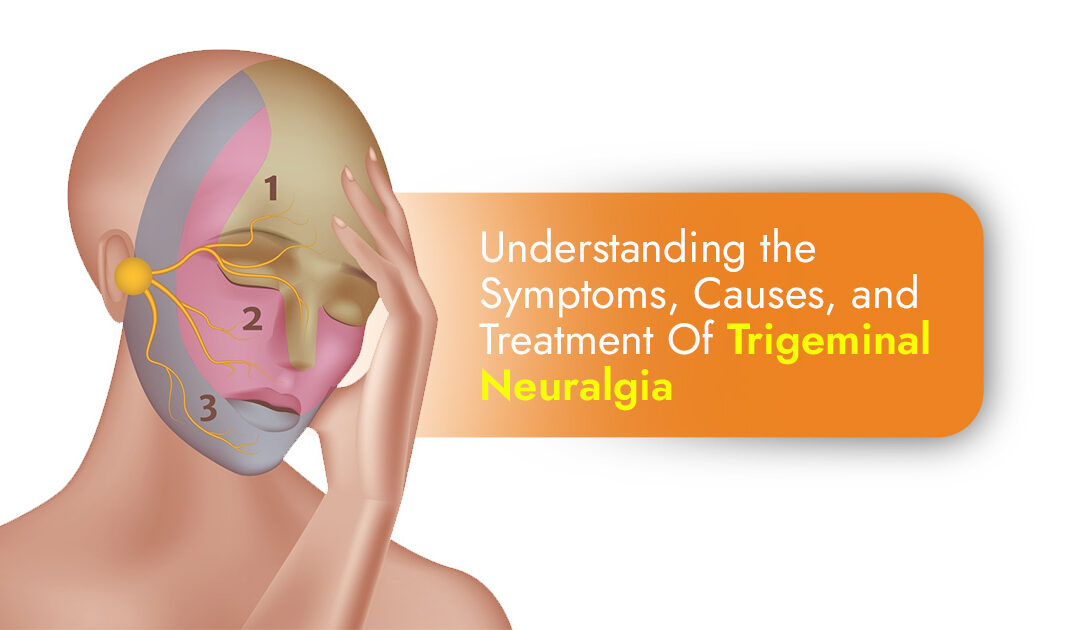A condition causing excruciating pain similar to an electric shock on one part of the face is known as trigeminal neuralgia. In this, the trigeminal nerve gets affected and fails to perform its function of carrying signals from the face to the brain. It affects your normal functioning so much so that a task like brushing your teeth or putting on makeup could trigger a jolt of pain. This condition is long-lasting and chronic. However, it can be managed with proper treatment.
Those suffering from trigeminal neuralgia may primarily feel like short, mild episodes of pain. As the condition worsens, they experience longer periods of pain occurring more than usual. Women and individuals over the age of 50 are more likely to develop this condition.
What Are The Symptoms of Trigeminal Neuralgia?
The symptoms of trigeminal neuralgia might consist of one or several of these patterns:
- Severe shooting or stabbing pain resembling an electric shock.
- Sudden pain triggered by touching the face, chewing, talking, or cleaning teeth.
- Pain lasts from seconds to minutes.
- Pain accompanied by facial spasms.
- Persistent pain lasting days, weeks, months, or longer.
- Periods of pain-free intervals.
- Sensitivity in the cheek, jaw, teeth, gums, lips, eye, or forehead.
- Pain confined to one side of the face.
- Pain is focused in a single area or widespread.
- Pain rarely occurs during sleep.
- Increasing frequency and intensity of pain over time.
What Are The Causes Of Trigeminal Neuralgia?
Trigeminal neuralgia is a chronic pain condition that affects the trigeminal nerve, which is responsible for carrying sensation from the face to the brain. The exact cause is usually not known, but multiple factors can cause its development:
- Compression of the trigeminal nerve: Blood vessels or tumors can compress the nerve, leading to the pain signals being sent to the brain.
- Damage to the nerve: Injury, surgery, or infection can cause problems to the trigeminal nerve, leading to neuralgia.
- Multiple sclerosis: This autoimmune disease can damage the protective covering of the nerves, consisting of the trigeminal nerve as well.
- Arteriovenous malformation (AVM): AVMs are abnormal links between arteries and veins that may compress the trigeminal nerve.
- Tumors: Tumors in the brain or face have the potential to compress or damage the trigeminal nerve.
- Aging: Trigeminal neuralgia is more likely to occur in older adults, indicating that age-related deterioration of the nerve may contribute to its development.
- Genetic predisposition: Some people may be more prone to developing trigeminal neuralgia because of their genetic makeup.
How is Trigeminal Neuralgia Diagnosed and Treated?
A healthcare professional may diagnose trigeminal neuralgia depending on your description of pain, which includes the type, site of pain, and triggers such as eating or talking. They may further ask for tests to understand the cause of the condition. Those tests may include a neurological exam, reflex tests, and magnetic resonance imaging (MRI). These tests may even help in ruling out other potential conditions.
Trigeminal neuralgia is treated with a combination of medication, lifestyle changes, and, in some cases, surgery. Medications commonly used include anticonvulsants, pain relievers, and muscle relaxants. Lifestyle modifications, such as avoiding known triggers, managing stress, and getting adequate rest, can also help manage symptoms. When these approaches are insufficient, surgical options like microvascular decompression, Gamma Knife radiosurgery, or radiofrequency ablation may be considered to relieve pressure on the trigeminal nerve and reduce pain.
If you’re experiencing symptoms of trigeminal neuralgia, consult a healthcare professional today.

